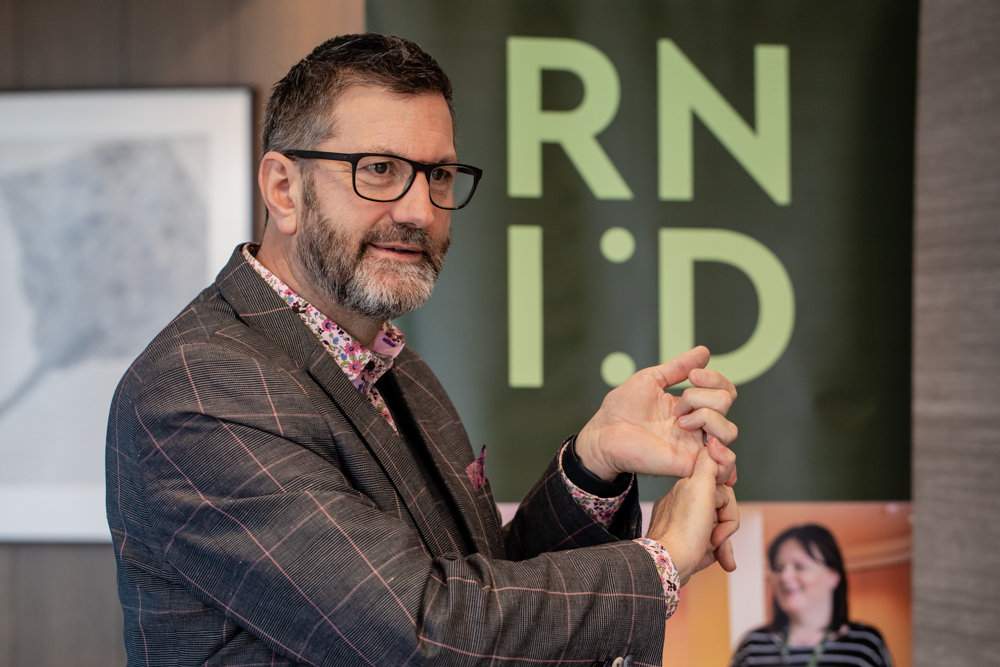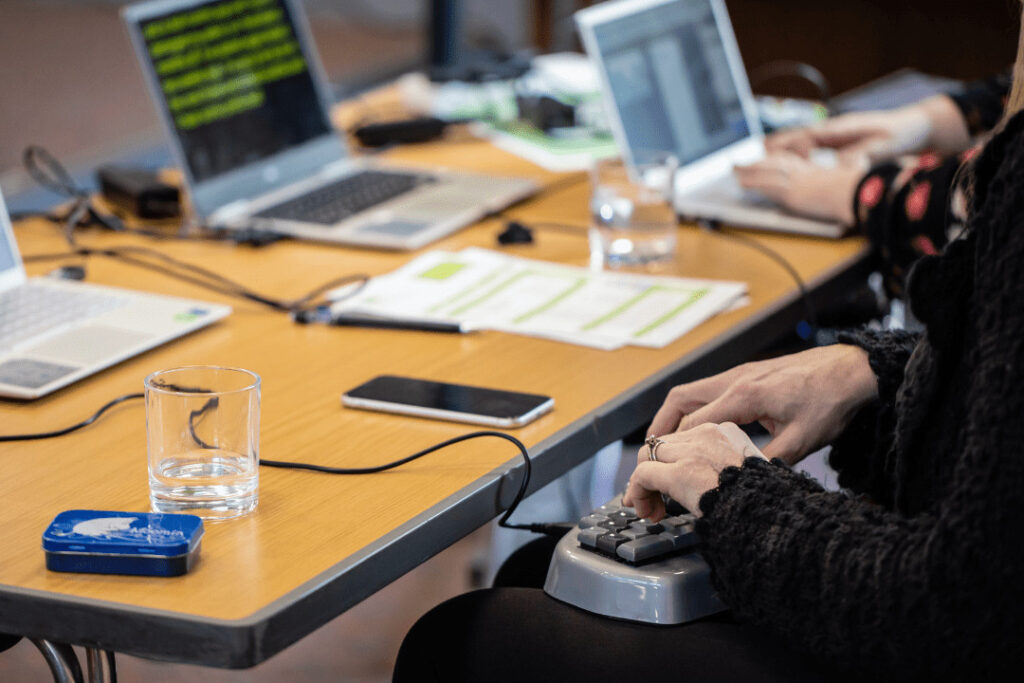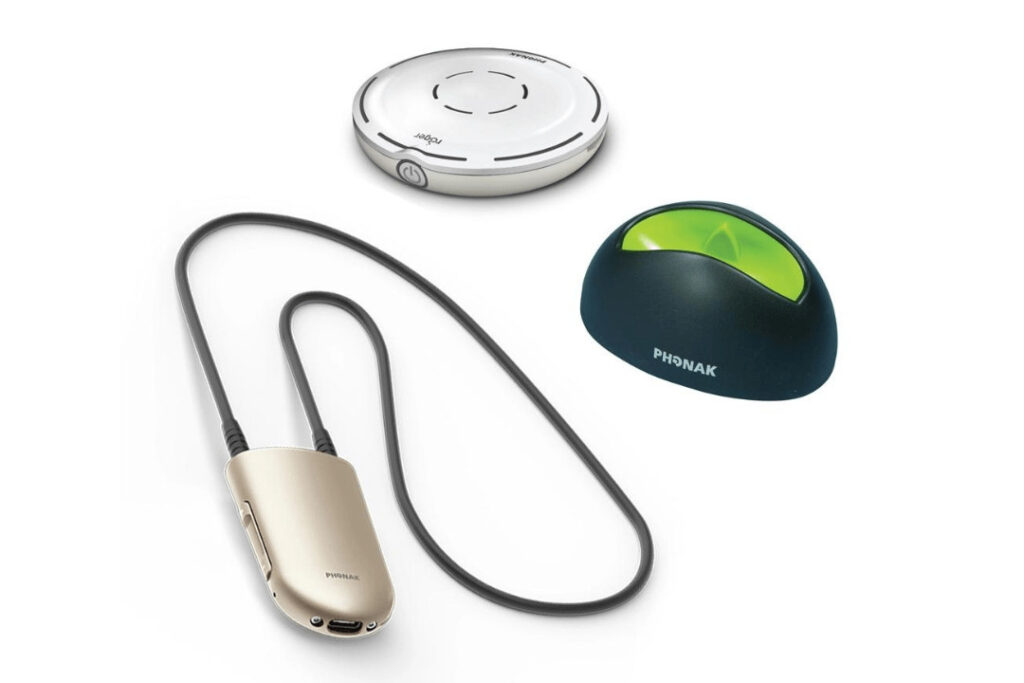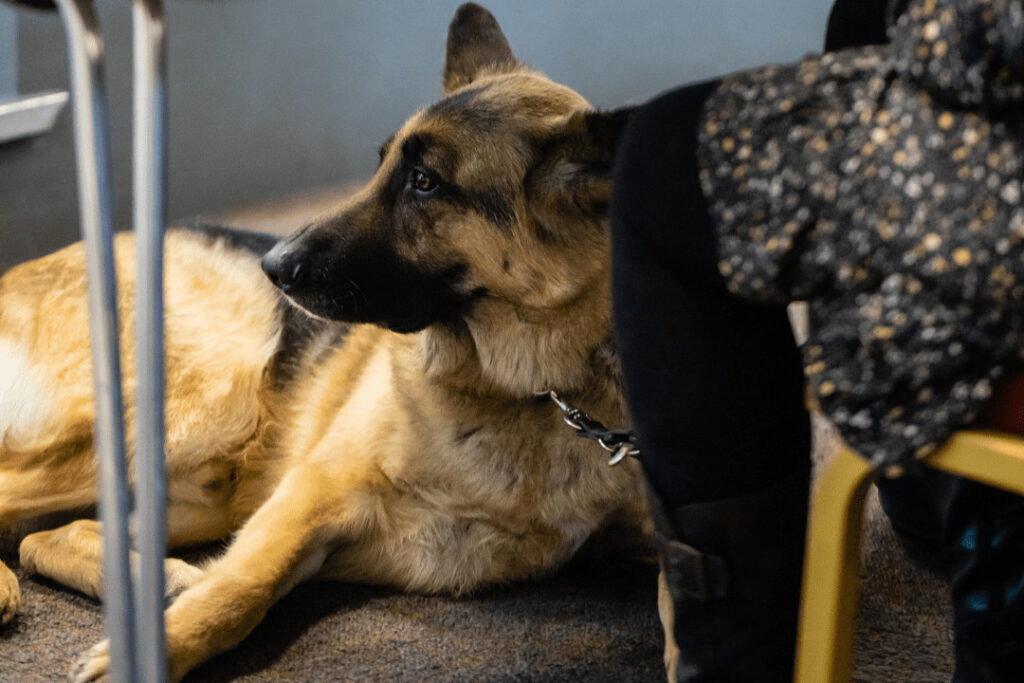
Making your event as inclusive as possible will enable all attendees to fully participate. There are several different types of communication and support which can be put in place to make events deaf aware. This page details how each of them works and some dos and don’ts for each one.
Different people find different types of support useful so part of any event set up should be asking attendees what they require.
You can download a PDF version of these tips (122 KB).
Read more about:
- British Sign Language (BSL) and BSL interpreters
- Lipreading and lipspeakers
- STTRs (Speech-to-text-readers)
- Hearing loops and personal listeners
- Assistance dogs
BSL and BSL interpreters

BSL interpreters enable communication between deaf sign language users and hearing people: it’s a two-way process.
Do:
Speak to the deaf person, not the interpreter.
Make sure your message is clear and be aware that the interpreter may not be familiar with some acronyms or jargon.
Use interpreters for social conversations as well as work topics.
Don’t:
Feel that interpreters are only there for deaf staff.
Use the third person: “tell him I said…” when communicating with the interpreter, just direct speech.
Lipreading and lipspeakers

Lipreading is the ability to recognise lip shapes, patterns, and facial expressions to understand what is being said. It requires a lot of guesswork and can be really tiring.
There are communication support professionals called ‘lipspeakers’, who work in a similar way to BSL interpreters, relaying speech clearly to people who rely on lipreading.
Do:
Face someone who is lipreading (rather than the lipspeaker).
Ensure good background lighting and speak at your natural pace.
Rephrase if needed (some words can be harder to lipread than others).
Use facial expressions (this helps to communicate the ‘tone’ of the conversation).
Allow time for the lipspeaker to relay the spoken information.
Don’t:
Overexaggerate speech (this distorts lip patterns).
Talk with hands obscuring the face.
Wait for the lipspeaker to finish before beginning your next sentence.
Speech-to-Text Reporters (STTRs)

STTRs provide professional communication support for deaf people and those with hearing loss – usually people who have English as their first or preferred language. STTRs listen to what is being said and simultaneously convert this to text on a screen. This is a word-for-word, not a summary, account.
This enables a deaf person or someone with hearing loss to follow exactly what is being said and to participate fully. In addition, where relevant, the STTR will indicate environmental sounds, such as laughter or an interruption by a mobile phone.
Do:
Remember that the STTRs must be able to hear you when presenting or commenting from the audience.
Avoid jargon and acronyms, or provide this information to the STTRs as preparation beforehand.
Provide the STTR with a list of attendee names so they can accurately type who is saying what.
Don’t:
Talk over each other because this is difficult to type and for the STTR to keep up with what is being said.
Tell the STTR if some things shouldn’t be typed (for example a joke).
Forget that colleagues using STTR are entitled to the same information in any interaction.
Room loops and personal listeners

A hearing loop helps people with hearing loss to hear conversations more easily. It works when a person’s hearing aids, cochlear implant or loop listener is switched to the hearing loop setting. Sound is transmitted wirelessly directly to the hearing device. This reduces the distracting background noises.
A personal listener (such as the Roger system) greatly improves the clarity of sound by allowing a human voice or another desired sound source, to be fed electronically into the listening device, reducing background noise and sound loss between speaker and listener.
Do:
Check in or get tips from the listener(s).
Ask if they can hear OK and check for visual cues i.e. flinching if it’s too loud.
Don’t:
Change how you speak.
Shout, speak slowly, or hold the microphone too close – this can all distort the sound, making it harder for the listener to process.
Assistance dogs

These can include hearing dogs, guide dogs and dual-trained dogs. You will know the type of dog by its harness: hearing dogs have a burgundy coat, guide dogs have a white harness with blue guide dog logo and yellow reflective sleeve, if the guide dog owner is also deaf then they will have a red and white reflective sleeve.
Dual purpose assistance dogs have a yellow coat and may sometimes have their harness on for guiding and their yellow coat on if not guiding.
Do:
Approach with care, especially if the dog is working.
Tap or touch the owner to let them know you are there.
Don’t:
Distract, call or pet the dog unless you’ve received clear instructions from the owner to do so.
More like this
Explore our other communication tips for daily life and the workplace on our deaf awareness hub.